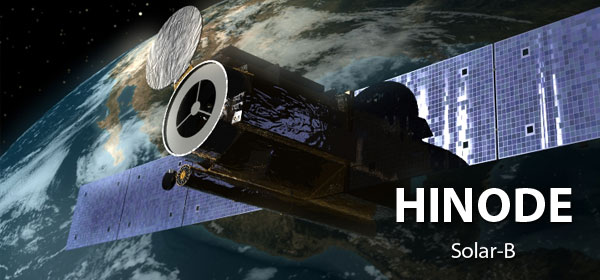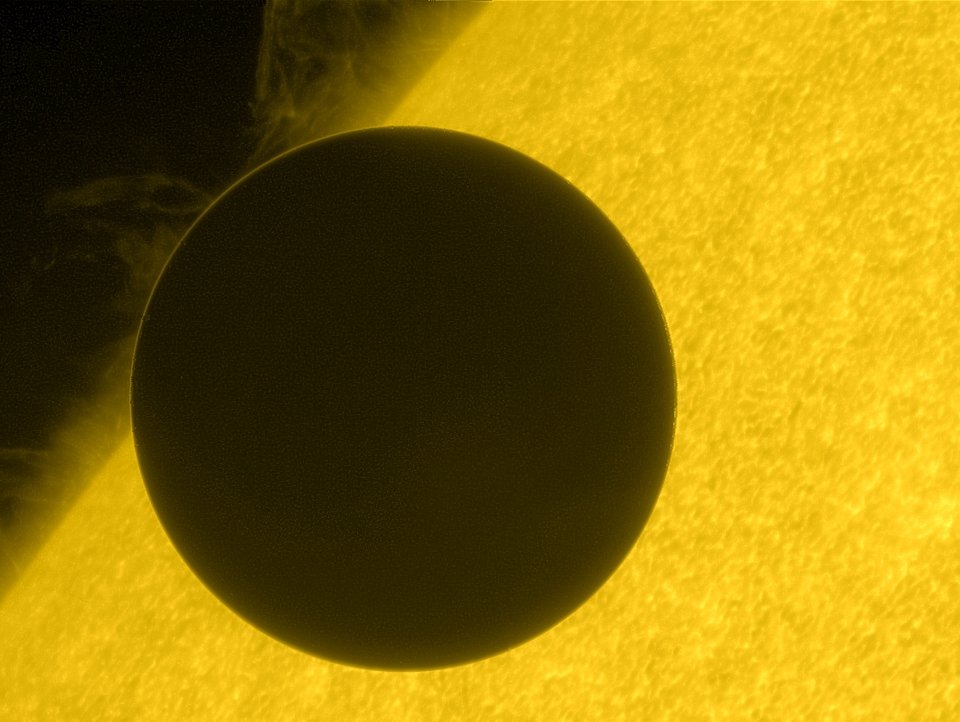HINODE
Solar-B
HINODE (Japanese for “Dawn”)
 Hinode is a joint Japan/US/UK mission (formerly known as Solar-B) led by the Japanese Aerospace Exploration Agency’s (JAXA) Space Science Research Division (formerly the Institute of Space and Astronautical Science (ISAS). It is designed to explore the magnetic fields in the solar corona and to improve our understanding of the mechanisms that power the solar atmosphere and drive solar eruptions. Following the JAXA tradition, the mission was renamed after the spacecraft’s first successful orbit from Solar-B to Hinode, a Japanese word that means sunrise. Hinode was launched from Japan’s Uchinoura Space Center on September 22, 2006, into a Sun‑synchronous orbit at an altitude of about 600 km, which means that it observes the Sun continuously for nine months at a time. Around the summer (northern hemisphere) solstice each year, Hinode experiences an “eclipse season” during which the Sun is eclipsed by Earth for a maximum of ten minutes in each 98 minute orbit.
Hinode is a joint Japan/US/UK mission (formerly known as Solar-B) led by the Japanese Aerospace Exploration Agency’s (JAXA) Space Science Research Division (formerly the Institute of Space and Astronautical Science (ISAS). It is designed to explore the magnetic fields in the solar corona and to improve our understanding of the mechanisms that power the solar atmosphere and drive solar eruptions. Following the JAXA tradition, the mission was renamed after the spacecraft’s first successful orbit from Solar-B to Hinode, a Japanese word that means sunrise. Hinode was launched from Japan’s Uchinoura Space Center on September 22, 2006, into a Sun‑synchronous orbit at an altitude of about 600 km, which means that it observes the Sun continuously for nine months at a time. Around the summer (northern hemisphere) solstice each year, Hinode experiences an “eclipse season” during which the Sun is eclipsed by Earth for a maximum of ten minutes in each 98 minute orbit.
Hinode consists of a coordinated set of optical, EUV, and X-ray instruments to investigate the interaction between the Sun’s magnetic field and its corona. The three complementary instruments work together as a highly innovative solar observatory.
- The Solar Optical Telescope/Focal Plane Package (SOT/FPP) is the first large optical telescope flown in space. Its aperture is 50 cm in diameter, the angular resolution is 0.25″ (corresponding to 175 km on the Sun), and the wavelengths covered extend from 480 to 650 nm. SOT also includes the Focal Plane Package (FPP) that consists of a vector magnetograph and a spectrograph. The vector magnetograph provides time series of photospheric vector magnetograms, Doppler velocity and photospheric intensity.
- The Extreme-ultraviolet Imaging Spectrometer (EIS) is a two-channel, normal-incidence EUV spectrometer. Its two channels cover the wavelength ranges 170-210 Å and 250-290 Å, selected to cover solar coronal emission lines. It has a mirror that is tiltable in the Solar X direction, and is used to build up rastered spectral images of the Sun in up to 25 spectral ranges. Additionally, EIS has both narrow (one- and two-arcsecond wide) slits, and wider (40- and 266-arcsecond) imaging slots, all with 512 arcseconds in the Solar Y direction. Under nominal conditions, the 40-arcsecond slot can be used to make simultaneous, separated, quasi-monochromatic images in up to twelve strong emission lines covering a temperature range from He II (8,000 Kelvin) to Fe XXIV (16 000 000 Kelvin). EIS can make slit images of active regions in 10 s, of the quiet Sun in 30 to 60 s, and of flares in 1 s.
- The X-Ray Telescope (XRT) is a high-resolution (1 arcsecond) grazing-incidence Wolter telescope that is the successor to the highly successful Soft X-Ray Telescope (SXT) on Yohkoh. High-resolution soft X-ray images covering the energy range from 0.2 to 2 keV reveal magnetic field configurations and their evolution, allowing the observation of energy buildup, storage and release process in the corona for any transient event. XRT covers a wide temperature range from 0.5 to 10 million Kelvin allowing it to see all the coronal features that are not all visible with any normal incidence telescope.


